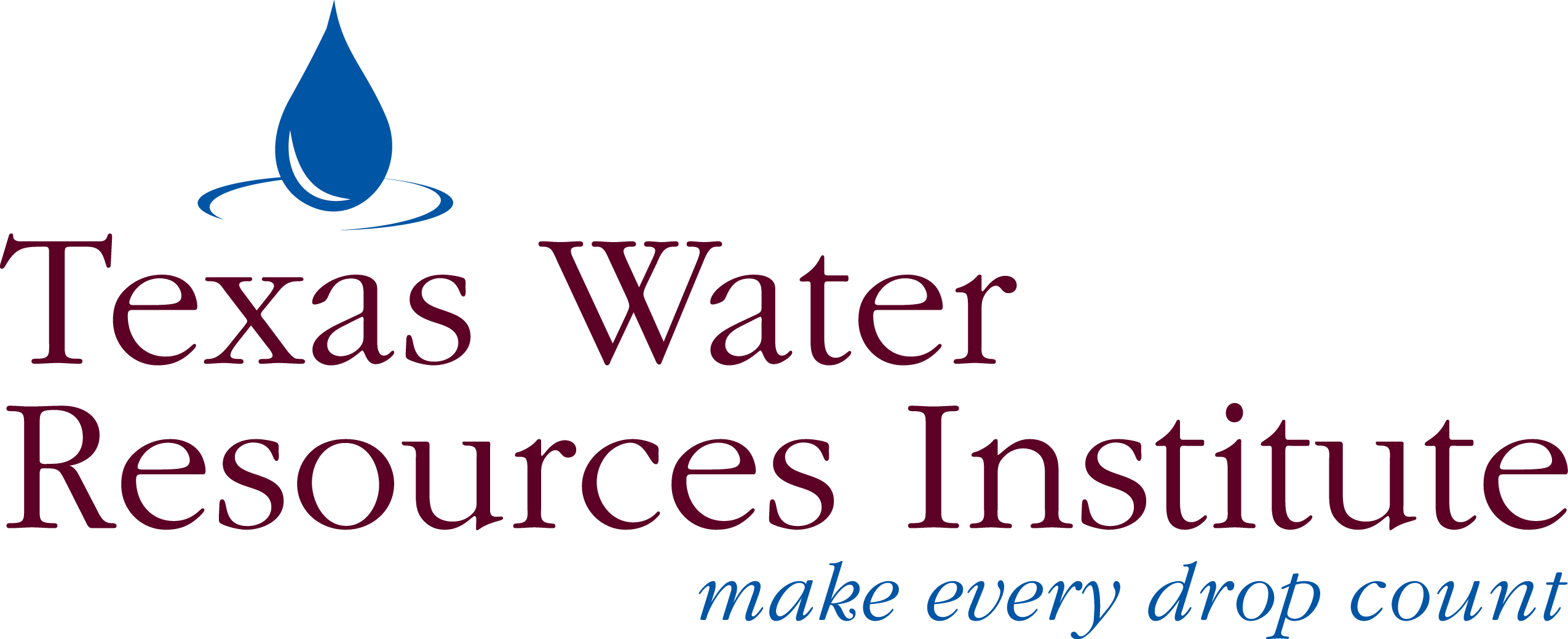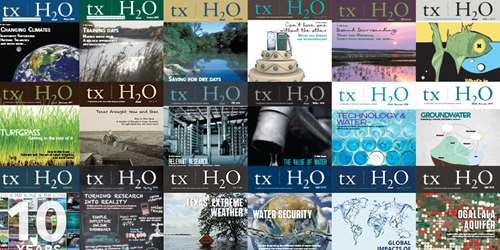Having enough water for growing populations in Texas is an important issue for city water utilities to anticipate. In the article Diversifying water portfolios, from the summer 2019 issue of txH2O, El Paso Water and San Antonio Water System (SAWS) describe the water management strategies they have implemented to supply enough water to their growing populations.
Read MorePosts tagged with txh2o highlight. View all posts
In anticipation of the fall 2021 issue of txH2O, the past article being highlighted is Health at the nexus of water insecurity. In the article, experts explain how complicated water insecurity can be. This topic is further discussed in the upcoming txH2O.
Read MoreTo keep up with a growing population, state water planners in Texas are more likely to include alternative water sources to bridge the supply gap. Two increasingly likely water sources include desalination and reuse water, according to the article Microfilters, major results from the fall 2017 issue of txH2O magazine.
Read MoreMore cities are using smart technology to save natural resources, money and time. The article Giving water an upgrade in the summer 2019 issue of txH2O magazine describes how smart cities are using different types of electronic sensors and technology to collect data, allowing the more efficient management of assets and resources.
Read MoreExperts have learned that urban landscapes can lose about one-third of irrigation water to runoff. Urban landscape irrigation runoff can be a big problem, according to the article Off and running in the spring 2016 issue of txH2O magazine.
Read MoreIn the article Less is more, experts explain the benefits of using Texas A&M AgriLife Extension Service’s Irrigation Technology Program, WaterMyYard.
Read MoreIn the article Feeding the future, partners of the Innovation Laboratory for Small-Scale Irrigation at the Norman Borlaug Institute for International Agriculture, a unit of the Texas A&M University system, are working in Ethiopia, Ghana, and Tanzania to help farmers improve the use of scarce water supplies through innovations in small-scale irrigation.
Read MoreWith hurricane season approaching, this txH2O highlight is an article about planning for flooding in Texas. The article, Planning for the next big one, asks researchers about innovative flood solutions.
Read MoreThis txH2O highlight is a profile article about Jude Benavides, Ph.D., an associate professor in the School of Earth, Environmental and Marine Sciences at the University of Texas Rio Grande Valley.
Read MoreTexans are no strangers to extreme weather events such as drought, flood and now freeze. In light of the severe winter storm that hit Texas earlier this year, this month’s txH2O highlight is Extremely Expected from the Texas’ Extreme Weather issue of txH2O.
Read MoreSince the next Ogallala Aquifer Summit is right around the corner, this month’s txH2O highlight is on the article Ogallala Aquifer Summit from the Ogallala Aquifer-themed issue of txH2O.
Read MoreThis month’s txH2O highlight focuses on projects led by an interdisciplinary group of Texas A&M University System researchers. These projects aimed to study and map the quantity, movement and management of these waters to lead to a better understanding of their governance.
Read MoreA popular txH2O article read in 2020 is Water, but no workers, from the summer 2019 Water Utilities Challenges issue.
Read MoreAt the Texas Water Resources Institute, a Graduate Student Research Grant Program exists to help Texas university graduate students in water resources and related fields gain experience applying for competitive research grants. The article, Getting their feet wet, from the 2010 issue of txH2O, has more information about the program.
Read MoreVirender Sharma, Ph.D., a professor in the Texas A&M School of Public Health, uses a simple, abundant and environmentally friendly element — iron — to clean water. In the txH2O article, Working wonders with ferrate, Sharma explains the process he has been researching for years.
Read MoreIn the summer 2015 issue of txH2O, the article Disappearing habitat explains how water and land management changes in Texas impacted the rice production industry and waterfowl habitat.
Read MoreWater security in Texas depends on water quality monitoring. At Texas Water Resources Institute, watershed restoration projects require consistent water quality monitoring once every two weeks for two years. In the water security issue of txH2O, the article How does water quality monitoring work? gives a behind-the-scenes look.
Read MoreThe article On the fast track summarizes how Texas A&M AgriLife Research scientists and Texas A&M AgriLife Extension Service professionals were able to help producers make the most of their available water resources when they were limited.
Read MoreDo you live in one of the most flood-prone regions in North America? Just in time for hurricane season, the June txH2O highlight is Do you live in Flash Flood Alley? from the fall 2016 Texas’ Extreme Weather issue.
Read MoreThe vadose zone, the layer of earth that lies between topsoil and groundwater, could have answers for drought prediction and mitigation according to the fall 2012 txH2O article, Unlocking secrets of the vadose zone.
Read MoreIn the summer 2015 issue of txH2O, the article Satellites, sensors and soil explains how NASA, the University of Texas at Austin and Texas A&M University use different monitoring strategies, including satellites and in-ground sensors, to research soil moisture.
Read MoreWith Groundwater Awareness Week in March, we are highlighting an article from the Ogallala Aquifer edition of the fall 2018 txH2O, Living life with less water.
Read MoreWhat does water security mean to you? In preparation for the publication of our winter 2020 issue of txH2O — a focus on the connection of water and health — we are highlighting the article Understanding water security.
Read MoreWith Texas’ decreasing water availability and increasing water demand, a growing number of water providers are using or considering water reuse, either direct or indirect, for drinking water.
In the spring 2016 issue of txH2O, TWRI published an article about scientists from the Texas A&M University System successfully demonstrating the feasibility of using electron beam, or eBeam, to treat wastewater for direct potable reuse.
Read MoreWhen making New Year’s resolutions for 2020, add water conservation to your goals! What’s your water footprint?, an article in our Fall 2009 txH2O, lists the amount of water used for many common activities.
Read MoreDid you know that Texas A&M AgriLife opened the first WaterSense-labeled house in the Dallas-Fort Worth region? We spotlighted the home in our Fall 2013 issue of txH2O and you will find it on page 12 in the issue’s pdf.
Read MoreWith pre-proposal deadlines approaching on Oct. 28 for Texas Water Resources Institute’s graduate scholarship programs, this txH2O highlight is focused on an article about the success of previous scholarship recipients.
Read MoreThis month’s txH2O highlight is from the Fall 2017 issue of the magazine and focuses on the effectiveness of low impact development (LID) practices in reducing negative environmental impacts of urban growth.
Read MoreWith populations increasing, there is an increased likelihood of the need for intensive water reuse, according to experts. August’s txH2O highlight is Safe water = Secure water, an article about Texas A&M University researchers studying ways to remove more chemicals from water during the treatment process.
Read MoreDid you know a whole crop can be irrigated using a cell phone app? July is Smart Irrigation Month and TWRI has many resources about modern irrigation practices for producers in our magazine, txH2O.
Read MoreSummer is here, and despite the recent increase in rainfall, water conservation is still important for the increasing population of Texas. txH2O highlight No. 6 is an article about how homeowners and utilities can conserve water using new technologies.
Read MoreApril showers have brought some May floods. This month’s txH2O highlight includes a list of resources related to flooding and drought.
Read MoreApril’s txH2O highlight is about the predictions of climate change impacts in Texas. The article, Texas is vulnerable to climate change, from the winter 2008 climate change issue, mentions future challenges resulting from increased populations, hotter temperatures and high greenhouse gas emissions.
Read MoreThis month’s txH2O highlight was chosen with Groundwater Awareness Week (March 11-15) in mind. Underground and Under Scrutiny from the Summer 2014 groundwater issue of txH2O examines the options for keeping the growing number of residents in Texas supplied with water.
Read MoreThis month’s txH2O highlight focuses on the successful restoration of a Texas wetland project. The saltwater marsh known as Magic Ridge Marsh had blocked tidal flow. Over the years, blocked channels and stagnant, salty waters caused the marsh to degrade.
Read MoreConservation Matters is beginning a new series highlighting previous articles from TWRI's biannual magazine, txH2O.
Read MoreArchive
Popular Tags
Meet a scientist Texas Water Journal TWON TWRI Texas Well Owner Network txH2O highlight Watershed Protection Plan Texas Riparian and Stream Ecosystem Education Program txH2O water quality Urban Riparian and Stream Restoration Program groundwater research roundup USGS Ogallala Aquifer WPP Riparian transboundary groundwater Dallas Center Mills Scholarships

